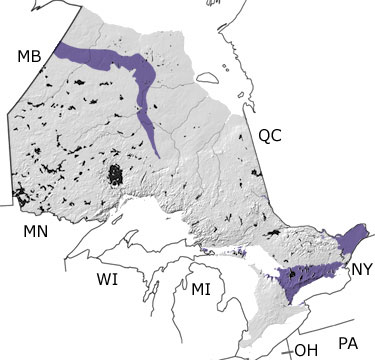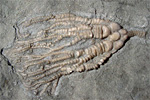

The Ordovician in Ontario, Canada |
||||||||||||||||||||||||||||||||||||||||||||||||||||||||||||||
|
||||||||||||||||||||||||||||||||||||||||||||||||||||||||||||||
Paleontology and geologyMost of Ontario was above sea level and exposed to erosion during the Ordovician. However, shallow seas were encroaching over parts of the southeast, and they got deeper in some areas throughout the period. Limestones, sandstones, and shales from this time contain fossils of the diverse marine creatures that lived in the seas. Corals and sponges formed reefs in the warm waters, which flourished with trilobites, brachiopods, cephalopods, bivalves, gastropods, bryozoans, crinoids, and graptolites. In very shallow, nearshore environments, stromatolites built up mounds and invertebrates left tracks and burrows in the mud and sand. In deeper areas, stagnant, low-oxygen waters allowed organic material to build up in the mud. These layers formed “oil shales,” which were processed for the oil and gas in the mid-1800s until more productive areas were found. Toward the end of the period, the easternmost lagoons dried up as they filled with sediment and were uplifted by continental collisions in the east. However, the area between Lakes Huron and Erie remained under water. |
||||||||||||||||||||||||||||||||||||||||||||||||||||||||||||||
|
|
||||||||||||||||||||||||||||||||||||||||||||||||||||||||||||||
|
site tour |
about the site |
site map |
site credits |
page credits |
help |
FAQs |
contact |
||



